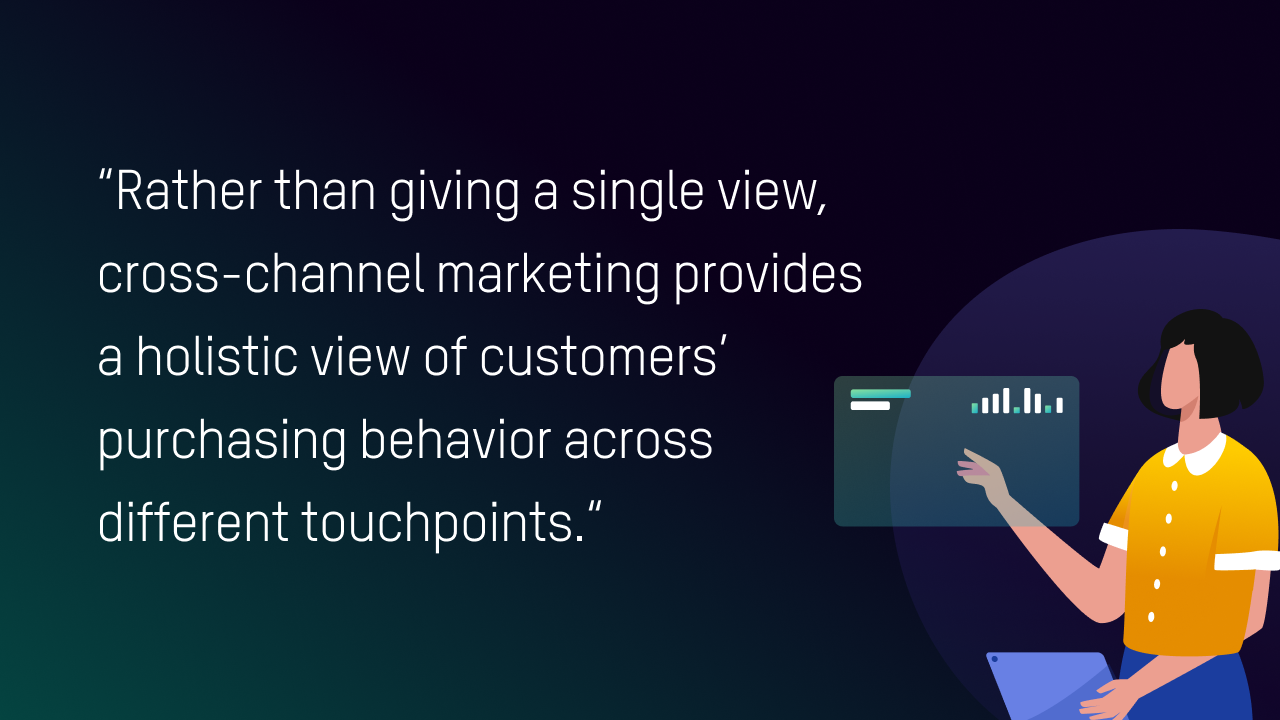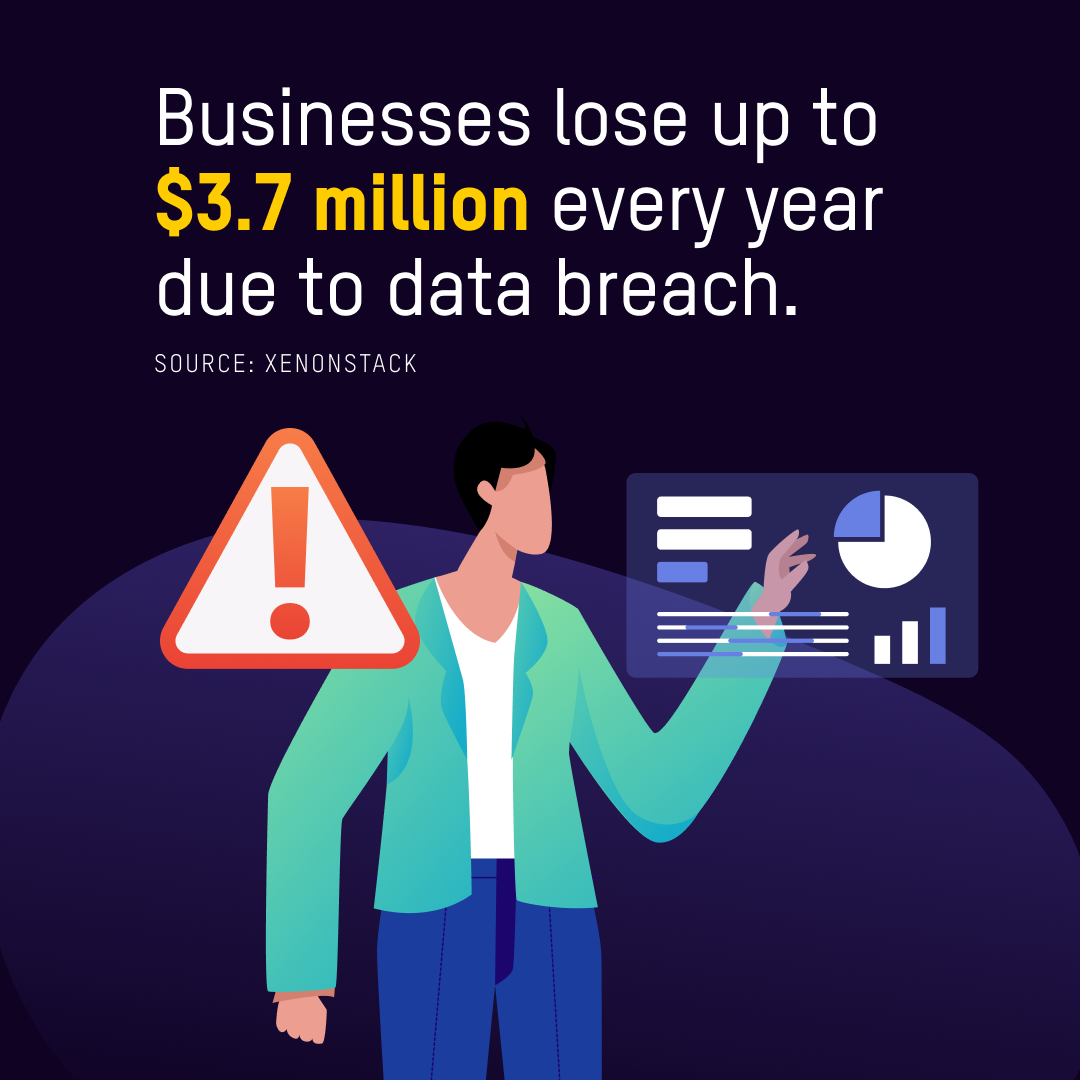Every customer undertakes a unique purchasing journey. To successfully move them down the sales funnel, it’s important to reach them at the right channels across different stages of their lifecycle. This is where cross-channel marketing comes in.
Cross-channel marketing allows brands to use multiple, interconnected channels to create a consistent experience for their customers wherever they are in their journey. In this type of marketing approach, each channel works together to pass along information, informing companies’ marketing decisions.
So rather than giving a single view, cross-channel marketing provides a holistic view of customers’ purchasing behavior across different touchpoints. This enables companies to build seamless and meaningful experiences, which, in turn, help them drive engagement and improve customer relationships.

But the secret to successful cross-channel campaigns lies in one crucial thing—how data is being used. The ways marketers utilize the data they gather plays a critical role in the success of their cross-channel efforts. Because, while it provides numerous benefits to companies, this type of approach also poses challenges to businesses.
Believe it or not, there are numerous barriers that companies must overcome in the collection and analysis of cross-channel data. From aggregating large volumes of data to monitoring data inaccuracies, let’s look into the common challenges that marketers face in cross-channel marketing analytics.
#1. Inaccuracies in Data
Incorrect Campaign Tracking
Unfortunately, not all data is reliable. Oftentimes, it can be marred with errors and inconsistencies. For instance, tracking parameters set for paid ads can quantify actions differently or can even lead to data loss. In websites, bot traffic might not be filtered so they get quantified like human traffic. With the advancing technology, it’s becoming difficult for companies to distinguish artificial traffic.
#2. Management in Data
Voluminous Data
With time, the data being collected grows exponentially. This is especially true for those that use multiple marketing channels. Roughly 2.5 quintillion data is stored in businesses’ databases on a regular basis (EMC Consulting). This is the reason why data management is one of the top challenges facing modern businesses.
Unstructured Data
The majority of data that businesses gather is unstructured (80%), which creates problems as they must first mine through it before they can analyze it. Aside from that, 33% of businesses also face poor data quality due to duplicated data (Forrester Consulting). Furthermore, since they come from disparate sources with different parameters, aggregating and analyzing data can be more challenging for them.
Lack of Security
Since data integration can be time-consuming and even resource-intensive, companies tend to push their data security efforts later in the stage of data collection. Apparently, data repositories are susceptible to breaches but most businesses don’t prioritize data security efforts, such as data inscription and data security monitoring. In fact, enterprises can lose up to $3.7 million from lack of security measures around their data (Xenon Stack).

#3. Lack of Action
Untouched Data
The majority of data that companies collect lies dormant. Around 60-70% of their gathered data remains untouched mainly due to their lack of knowledge, time, and resources in data collection and analysis (Forrester Consulting). Oftentimes, most businesses stop with reporting and fail to allocate time and resources to analyzing their findings. The lack of action is seen as major problem in data collection and analysis.
Challenges are inevitable when working with big data. Luckily, there are methods that can help businesses overcome these barriers.
Cloud Services
The use of cloud services, such as Amazon Web Services, can help businesses manage and store large amounts of data with lower costs and lesser resources. It also promises better security as most cloud providers comply with stringent security protocols and place robust security controls within their infrastructure to provide a safe environment for data analytics. Furthermore, while human intervention is still necessary, the use of cloud services can also automate some tasks to improve productivity.
Tools and Technologies
While hiring skilled and trained professionals in data analytics is paramount, businesses can also benefit from leveraging the latest technologies, such as artificial intelligence (AI) and machine learning. These solutions reduce inefficiencies in data collection and integration, as well as minimize data errors and inaccuracies. Using AI, for instance, can help organizations extract and validate data to accelerate the process, reduce manpower, and minimize errors.



